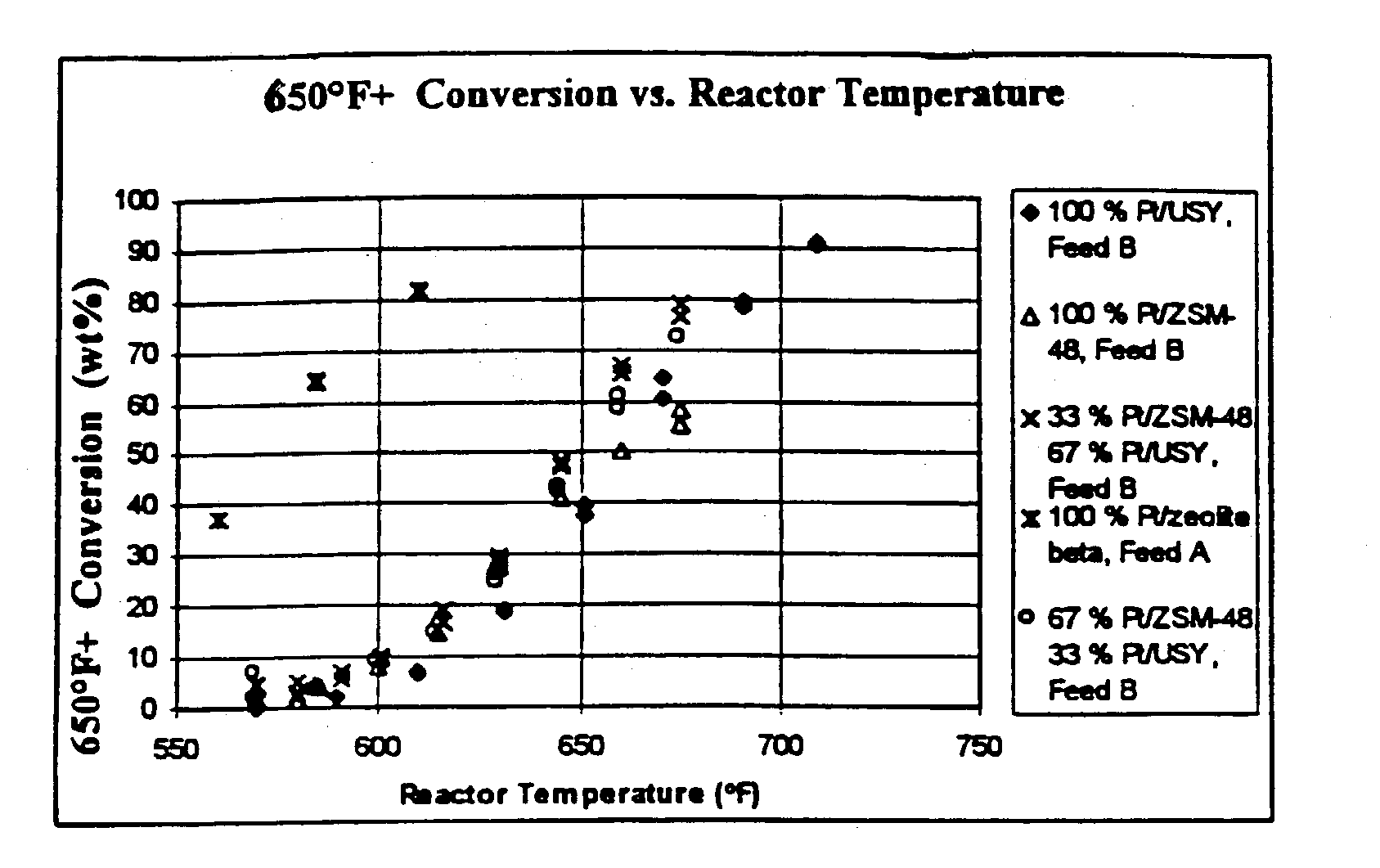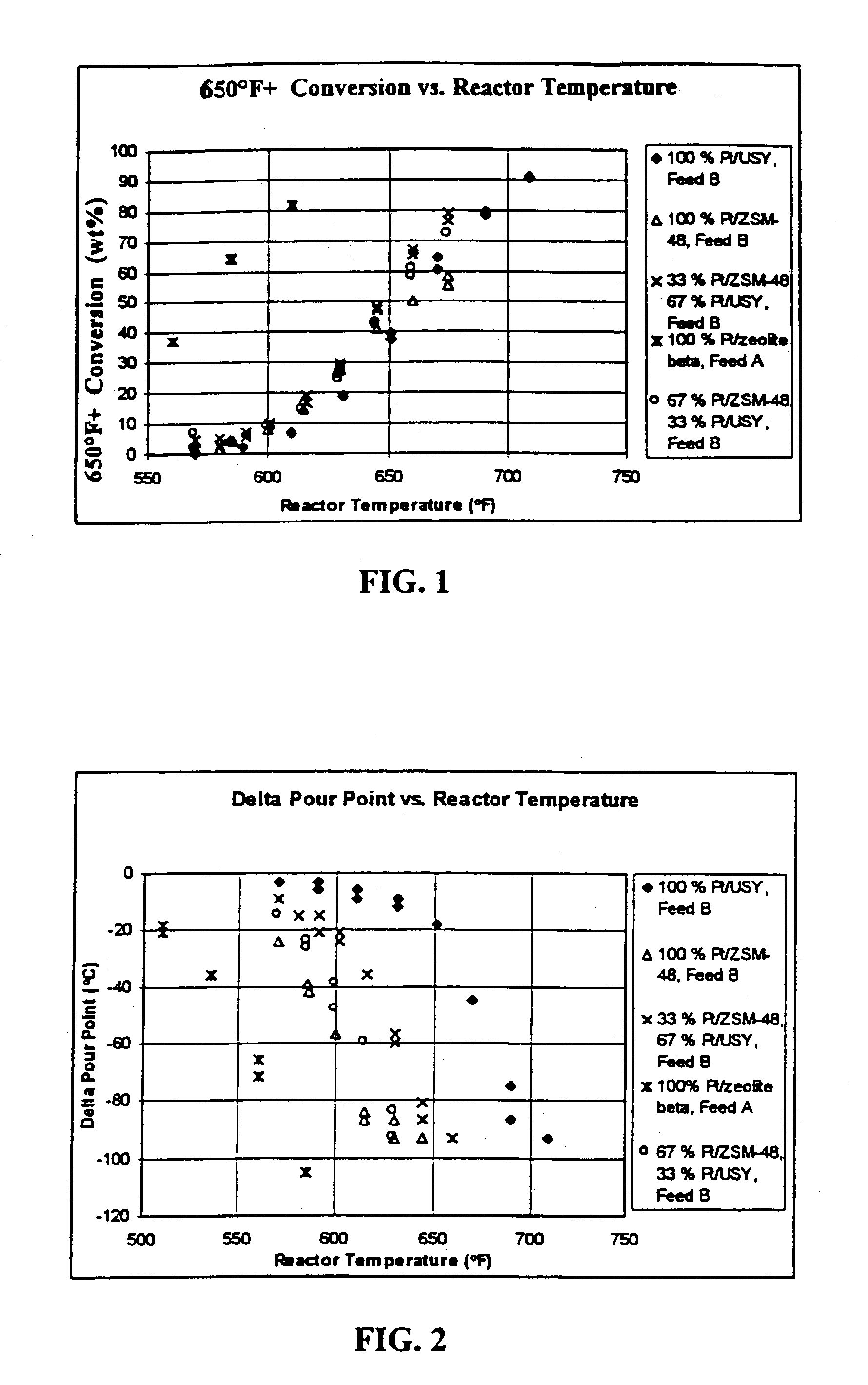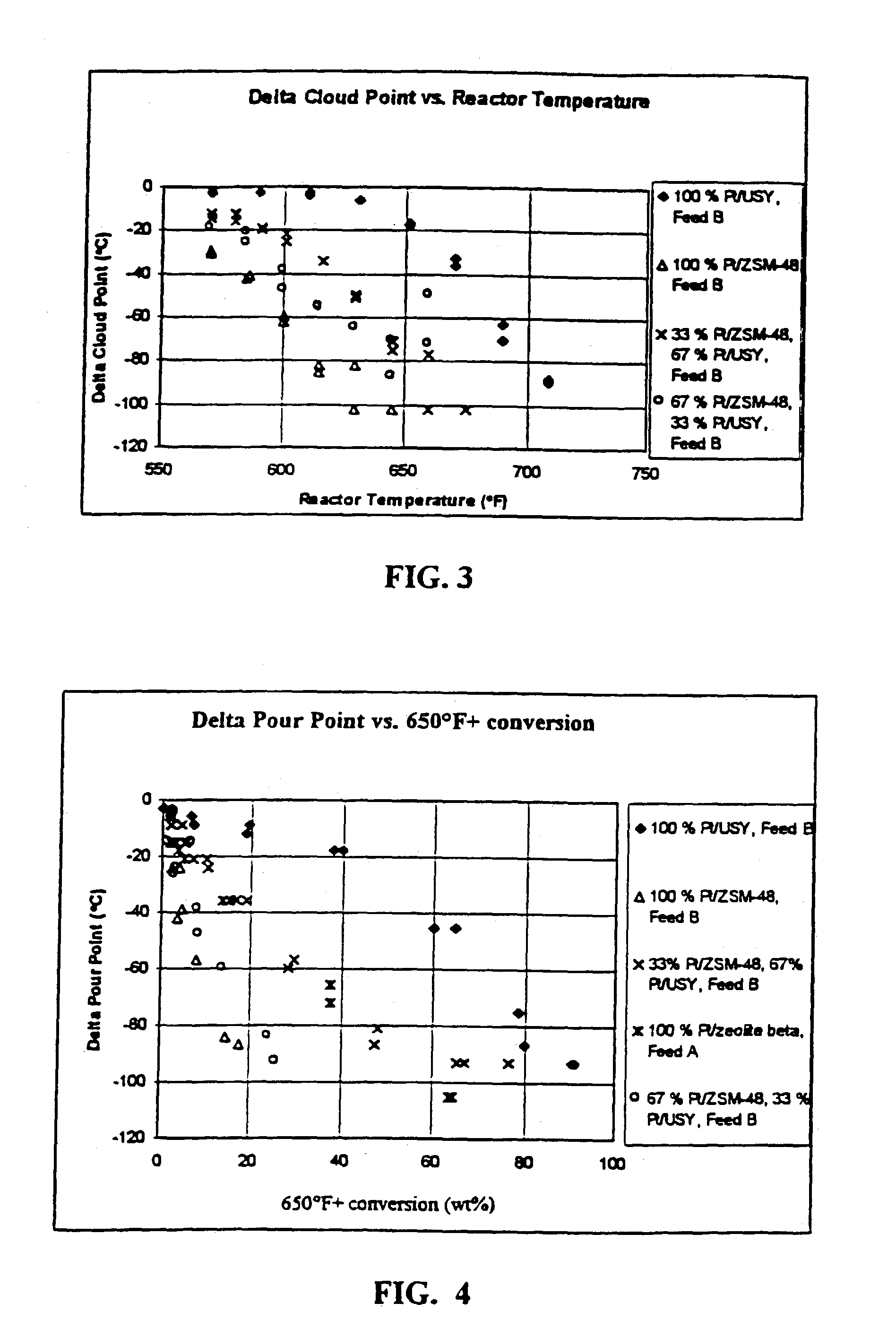Process for catalytic dewaxing and catalytic cracking of hydrocarbon streams
a hydrocarbon stream and catalytic cracking technology, applied in hydrocarbon oil cracking, petroleum chemical modification, etc., can solve the problems of limiting the available feedstock, affecting and ignoring the rest of the components, so as to maximize the yield of diesel fuel and minimize the yield of naphtha. , the effect of reducing the pour point and the cloud poin
- Summary
- Abstract
- Description
- Claims
- Application Information
AI Technical Summary
Benefits of technology
Problems solved by technology
Method used
Image
Examples
example 1
[0055]In order to demonstrate the present invention, Moderate Pressure Hydrocracker Bottoms were processed over five different fill ratios. The five catalyst fills examined were:[0056]1. 100% Pt / ZSM-48[0057]2. 67 vol % Pt / ZSM-48 and 33 vol % Pt / USY[0058]3. 33 vol % Pt / ZSM-48 and 67 vol % Pt / USY[0059]4. 100% Pt / USY[0060]5. 100% Pt / zeolite beta
[0061]Two different samples of the hydrocracked bottoms (Feedstocks A and B) were processed in accordance with the present invention using these five fill ratios. Table 1 below lists the properties for each feedstock.
[0062]
TABLE 1MODERATE PRESSUREHYDROCRACKER BOTTOMS PROPERTIESPROPERTYFEEDSTOCK “A”FEEDSTOCK “B”API34.033.7Pour Point (C.)3939Cloud Point (C.)4348Sulfur, ppm3029Nitrogen, ppm45Basic Nitrogen, ppm00.01D2887-IBP (F.)51548710% off66566330% off75174950% off80580370% off85585390% off916915D2887-FBP9931010
Table 2 below lists the major properties of each catalyst.
[0063]
TABLE 2CATALYST PROPERTIESPROPERTYPt / USYPt / ZSM-48Pt / ZeoliteZeoliteUSY 24...
example 2
[0079]The catalysts listed in Table 4 below were evaluated for hexadecane isomerization performance. All catalysts were exchanged with Pt except for catalyst number 5, which was impregnated. Experiments were carried out in a ½″ diameter tubular down-flow trickle-bed reactor. The hexadecane was used as received from Aldrich Chemical Company. Each catalyst evaluated was extruded and then lightly pressed to provide a catalyst having a length to diameter ratio of less than 4. The catalysts were then loaded into the reactor, and sand (80 / 120 mesh) was added in a ratio of 0.3 cc of sand per cc of extrudate to fill any void spaces. After being loaded into the reactor, the catalysts were dried by passing 100% hydrogen through the reactor at 250° C. under atmospheric pressure for 2 hours. After drying, the hydrogen flow was terminated and the catalysts were presulfided by passing a mixture of 2% H2S in hydrogen through the reactor while the temperature was ramped from 250° C. to 370° C. and ...
PUM
| Property | Measurement | Unit |
|---|---|---|
| cloud point | aaaaa | aaaaa |
| pour point | aaaaa | aaaaa |
| pour point | aaaaa | aaaaa |
Abstract
Description
Claims
Application Information
 Login to View More
Login to View More - R&D
- Intellectual Property
- Life Sciences
- Materials
- Tech Scout
- Unparalleled Data Quality
- Higher Quality Content
- 60% Fewer Hallucinations
Browse by: Latest US Patents, China's latest patents, Technical Efficacy Thesaurus, Application Domain, Technology Topic, Popular Technical Reports.
© 2025 PatSnap. All rights reserved.Legal|Privacy policy|Modern Slavery Act Transparency Statement|Sitemap|About US| Contact US: help@patsnap.com



